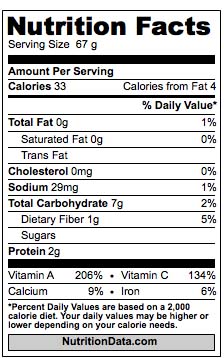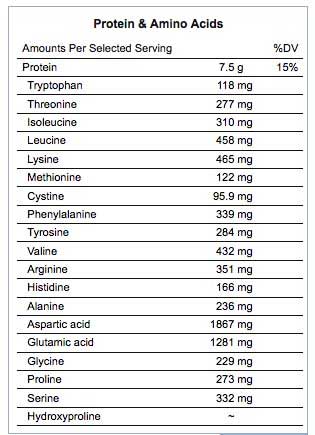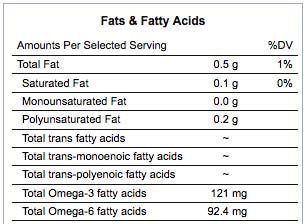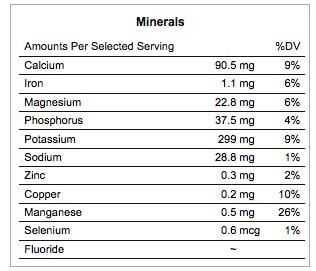Kale is actually a form of cabbage that evaded domestication, sharing many of the same traits as wilder plant relatives unafraid of holding on to their bitter principle, and relatively unruly appearance.
Kale is perfectly content letting its luscious green leafy hair down, being the 'hippie' member of a family that includes the more tightly wound broccoli, cauliflower and the Brussel sprout, whose greater respectability as far as most restaurant menus go
This means kale is more likely to be found forgotten, shriveling up somewhere on the bottom shelf of someone's refrigerator, no doubt possessed by someone with every intention (but not the time and appetite enough) to eat it.
But please do not underestimate this formidable plant, which grows as high as six to seven feet in the right conditions, casting a shadow as long as the impressive list of beneficial nutritional components it contains.
Its nutritional density, in fact, is virtually unparalleled among green leafy vegetables. Consider too that during World War II, with rationing in full effect, the U.K. encouraged the backyard cultivation of this hearty, easy to grow plant for the Dig for Victory campaign that likely saved many from sickness and starvation. Over a half century later, kale's status as a former cultural nutritional hero has faded into near oblivion ... until now, we hope!
Kale Contains ALL the Essential Amino Acids and 9 Non-Essential Ones
You will notice that one cup of raw kale contains less than 1 gram of fat (0.3 grams to be exact), 2 grams of protein, and subtracting the 1 gram of fiber from the total carbohydrate content (7), an effective carb content of 6 grams per serving, which is almost entirely complex carbohydrate, i.e. "starch." This means it has a 3:1 carbohydrate-to-protein ratio – an exceptionally high amount of protein for any vegetable, and one reason why it has recently been acclaimed as the "new beef."
Indeed, like meat, kale contains all 9 essential amino acids needed to form the proteins within the human body: histidine, isoleucine, leucine, lysine, methionine, phenylalanine, threonine, tryptophan, valine – plus, 9 other non-essential ones for a total of 18:
Consider too that compared to meat, the amino acids in kale are easier to extract. When consuming a steak, for instance, the body has to expend great metabolic resources to break down the massive, highly complex, and intricately folded protein structures within mammalian flesh back down into their constituent amino acids;
Then, later, these extracted amino acids must be reassembled back into the same, highly complex, intricately folded and refolded human proteins from which our body is made. This is a time-consuming, energy-intensive process, with many metabolic waste products released in the process.
For the same reason that massive mammalian herbivores like cows, for instance, eat grass -- not other animals -- kale can be considered anabolic, "meaty," and worthy of being considered as a main course in any meal. The nice thing, too, is that less is needed to fulfill the body's protein requirements.
Also, kale is so much lower on the food chain than beef, that it doesn't bio-accumulate as many, and as much, of the toxins in our increasingly polluted environment. And this, of course, doesn't even touch on the great "moral debate" concerning avoiding unnecessary harm to sentient beings, i.e. eating kale is morally superior than eating/killing animals.
Kale is an Omega-3 Diamond In the Rough
While it is considered a "fat free" vegetable, it does contain biologically significant quantities of essential fatty acids – you know, the one's your body is not designed to create and must get from the things we eat or suffer dire consequences.
In fact, you will notice it contains more omega-3 than omega-6, which is almost unheard of in nature. It is a general rule that you will find a 40:1 or higher ratio of omega-6 to omega-3 found in most grains, seeds, nuts and beans. Peanuts, for instance, have 1,800 times higher omega-6 fat levels than omega-3,1 which (taken in isolation) is a pro-inflammatory and unhealthy ratio. Kale, therefore, is a superstar as far as essential fatty acids go, and especially considering that all of its naturally occurring fat-soluble antioxidants protect these fragile unsaturated fats from oxidizing.
Kale's Vitamin Content More Pays for Itself Many Times Over
Now to the vitamins. Kale is a king of carotenoids. Its vitamin A activity is astounding. One cup contains over 10,000 IU's, or the equivalent of over 200% the daily value. Also, consider that most of this vitamin A (retinol) is delivered the form of beta-carotene, which in its natural form is the perfect delivery system for retinol (two retinol molecules attached to one another), as it is exceedingly difficult to get too much. If you compare it to the synthetic vitamin A used in many mass market foods and vitamins, it is an order of magnitude or higher safer.
Kale is an Eye-Saving Super Food Rich In Vitamins
Kale has a few more surprises left in the "vitamin" department. It turns out that it is loaded with both lutein and zeaxanthin at over 26 mg combined, per serving. Lutein comes from the Latin word luteus meaning "yellow," and is one of the best known carotenoids in a family containing at least 600. In the human eye it is concentrated in the retina in an oval-shaped yellow spot near its center known as the macula (from Latin macula, "spot" + lutea, "yellow"). This "yellow spot" acts as a natural sunblock, which is why adequate consumption of lutein and zeaxanthin may prevent macular degeneration and other retinal diseases associated with ultraviolet light-induced oxidative stress.
Keep in mind that a 26 mg dose of lutein + zeaxanthin can easily cost a $1 per dose. In effect, one could calculate the cost reduction of this added bonus into kale's sticker price, which incidentally, is insultingly low considering all it has to offer. How, after all, does one price the preservation of your vision?
Next, the vitamin C content, at over 80 mg per serving, is impressive. Consider, this is not ascorbic acid (which is semi-synthetic, and divorced from the food factors that help confer its amazing vitamin activity). Food vitamin C is a rare and precious element in the modern diet that is an absolute requirement for us to maintain our health. It can be likened to condensed sunlight frozen within the plant and released into our bodies after we eat it. Those who know kale well, can feel a happy little glow form within them after consuming it. And, I imagine, if we had the proper measuring device, we might see a slight uptick in intensity of the biophotons2 that are continually emitted from our body.
Kale: The New "Vegetable Cow"?
Now, just when you thought kale was just too good to be true, there is the matter of its remarkable mineral composition. Of course, the quality and mineral and microbial density of the soil within which it is grown is a factor, but kale generally has the ability to provide an excellent source of minerals, in what is known as food-state. Unlike inorganic minerals, e.g. limestone, bone meal, oyster shell, the calcium in kale is vibrating with life-sustaining energy and intelligence.
At 90 milligrams per cup, this highly bioavailable calcium actually contains more calcium per gram than whole milk! Also, a calcium bioavailability study3 from 1990, comparing milk and care in human subjects, found that kale calcium was 25% better absorbed, proving that the propaganda in support of milk as the ultimate source of calcium isn't as mooo-ving as commonly believed.
Just to be a bit exact about how much calcium there is in kale, for every gram of kale there is 1.35 mg of calcium. For every gram of whole milk, there is 1.13 mg. The difference, also, is that milk calcium is complexed with a sticky protein known as casein. This is why Elmer's glue was once made of milk protein. It is exceedingly hard for one-stomached (monogastric) mammals (that's us) to digest, and so, the calcium is difficult, if not impossible (in some) to liberate.
Also, casein proteins require a large amount of hydrochloric acid to break down with our protein-digesting pancreatic enzymes.Over time, this can lead to some metabolic acidosis which may further leach calcium from our mineral stores,
For example, bones, teeth, causing a net loss in calcium following the consumption of cow's milk products heavy in casein, especially cheese. Kale, like most vegetables, on the other hand, are alkalinizing and therefore actually reduce the body's requirements for acid-neutralizing minerals (e.g. calcium, magnesium, sodium, silica, potassium) and therefore reducing the total amount of calcium we need to stay in pH and mineral balance. Kale, therefore, not only contains more of the right form of calcium, but may actually reduce your daily bodily requirements for it. Move over moo juice, there's a new "vegetable cow" on the block!
Kale is also an excellent source of magnesium, which is why it is green. That deep, dark chlorophyll within its leaves contains one atom of magnesium per molecule. And considering how many of us are dying from excess elemental calcium4, adding additional sources of magnesium (which acts to balance out calcium) can have live-saving health benefits5.
Finally, kale is more than just a nutritional "superfood." It comes from a long line of plant healers, and could very well be considered and (given future FDA drug approval6) used as a medicine. Newly emergent biomedical literature now shows it may be of value in the treatment of cancer, elevated blood lipids, glaucoma, and various forms of chemical poisoning.
We have made available the first-hand abstracts on our Kale Health Benefits7 research page, for those who, like us, enjoy geeking out to the science. Also, kale, like most cruciferous vegetables, is exceedingly high in several other extensively research anticancer compounds, such as sulforaphane and indole-3-carbinol8. The data set on these are even more impressive than on kale itself, with over 140 disease states potentially remedies for sulforaphane alone: sulforaphane health benefits9.
How to Get Kale into Your Diet
Here is a great tip worth trying. Instead of eating an egg for breakfast with toast, try chopping up half a bunch of kale, a quarter of an onion, and stir fry it in a tablespoon of olive oil for a few minutes till it is tender. Make sure to add in a pinch of sea salt (I prefer Bragg's liquid aminos), a pinch of pepper, a teaspoon of lemon or if you are like me, use Ume Plum Vinegar. Also, go to your local health food store and get dulse flakes.
Note: Dulse flakes can be found in a pepper shaker like container. Kale, like most Cruciferous vegetables, contain naturally occurring goitrogens (or unnatural ones that have accumulated in them, such as perchlorate10 and various agrichemicals, especially in non-organically farmed vegetables) which can block the ability of the thyroid to utilize the iodine required to produce thyroid hormones (T4, T3). Since so many folks are already completely deficient in iodine, it really can't hurt (excepting rare cases of hyperthyroidism). Therefore it is a good practice to use it as a kale-specific antidote seasoning. Do all this and I promise you, there is a good chance but it will taste great, and leave you feeling deeply and completely nourished!
About the Author
Sayer Ji is the founder and director of GreenMedInfo.com and an advisory board member at the National Health Federation, an international nonprofit, consumer-education, health-freedom organization. He co-authored the book Cancer Killers: The Cause Is The Cure, and is working on another one with Tania Melkonian titled EATomology: An Edible Philosophy of Food.





